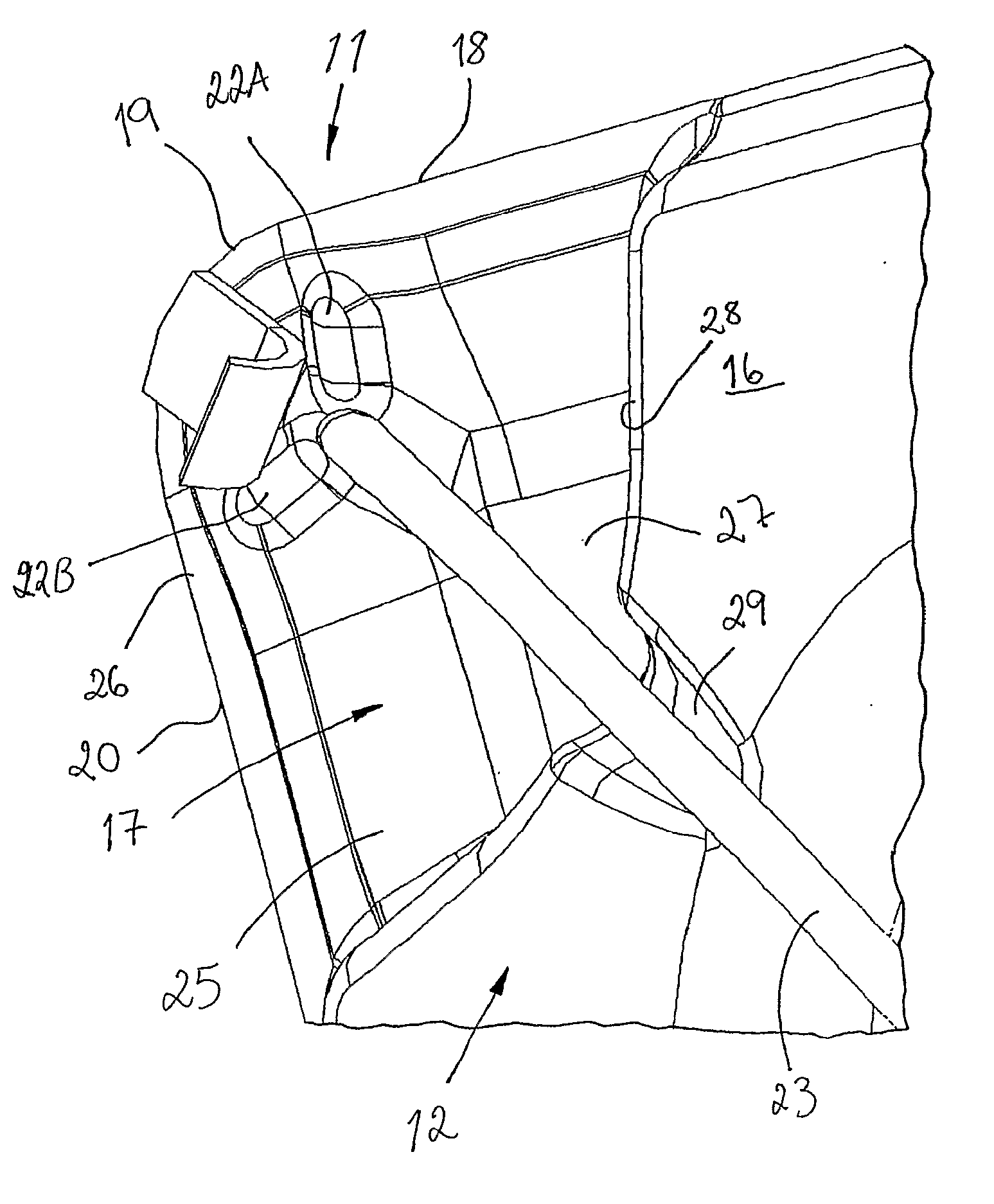Cutting Insert for Turning with Chip-Breaker Arrangement Providing Room for a Cooling Jet
a cutting insert and cooling jet technology, applied in the direction of cutting inserts, shaping cutters, manufacturing tools, etc., can solve the problems of difficult to come close to the cutting zone and lift the chip by means of a high-pressure jet, short service life, and high temperature of the cutting insert, so as to improve the service life, improve the machining effect, and reduce the effect of cutting for
- Summary
- Abstract
- Description
- Claims
- Application Information
AI Technical Summary
Benefits of technology
Problems solved by technology
Method used
Image
Examples
Embodiment Construction
[0014]FIGS. 1A, 1B and 1C show a cutting corner 11 in an embodiment of a cutting insert 10 according to the present invention. The cutting insert 10 has a polygonal basic shape and may be double-sided. The cutting insert 10 is made from a hard, wear-resistant material, preferably cemented carbide, but may alternatively be of ceramics or cubic boron nitride (CBN). The most common hard material in cemented carbide is wolfram carbide, WC, and a binder metal. Alternative carbides may be of the metals titanium (TiC), tantalum (TaC) and niobium (NbC). The most common binder metal is cobalt (Co), but also nickel (Ni) is found. The cemented carbide is a powder mixture built up by carbide particles having grain sizes of 0.5-10 μm and a binder metal. The percentage by volume of the binder metal is 5-40% and the percentage by volume of the carbides is 95-60%. The cutting insert 10 is preferably coated with a layer of, e.g., Al2O3, TiN and / or TiCN.
[0015]The cutting insert 10 is developed to be ...
PUM
| Property | Measurement | Unit |
|---|---|---|
| grain sizes | aaaaa | aaaaa |
| tip angle | aaaaa | aaaaa |
| tip angle | aaaaa | aaaaa |
Abstract
Description
Claims
Application Information
 Login to View More
Login to View More - R&D
- Intellectual Property
- Life Sciences
- Materials
- Tech Scout
- Unparalleled Data Quality
- Higher Quality Content
- 60% Fewer Hallucinations
Browse by: Latest US Patents, China's latest patents, Technical Efficacy Thesaurus, Application Domain, Technology Topic, Popular Technical Reports.
© 2025 PatSnap. All rights reserved.Legal|Privacy policy|Modern Slavery Act Transparency Statement|Sitemap|About US| Contact US: help@patsnap.com



